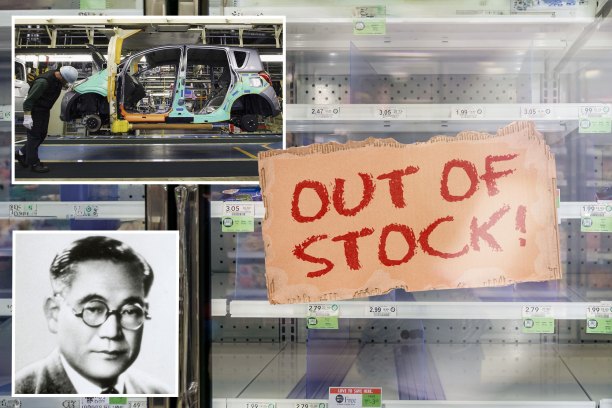Why the World is Running Out of Everything; New Book Explores How the Pandemic Has Revealed Issues With the Supply Chain, and other C-Virus related stories
Why the world is running out of everything:
In the mid-80s, a new way of doing things was sweeping the business world, but not everyone was convinced.
Jerome Bodmer worked in the purchasing department of Onan Corp., a Minnesota-based company that manufactured industrial generators.
Profits were steady, but then a team from McKinsey & Company, a the management consulting firm, showed up and insisted they could be making even more money by reducing the amount of inventory the company kept on hand.
“McKinsey’s advice appeared to collide with common sense,” writes Peter S. Goodman in his new book, “How the World Ran Out of Everything: Inside the Global Supply Chain” (Mariner Books), out June 11. “What would happen when, inevitably, some supplier ran into trouble and failed to deliver? Didn’t it make more sense to keep extra parts on hand?”
The McKinsey people assured Bodmer that “he had no idea how the modern world worked,” writes Goodman.
Onan adopted the strategy, and though it did please stockholders in the short term, it was a disaster for the workers and customers.
They frequently ran out of essential parts, delaying orders by weeks and even months.
“We’d be waiting to finish a generator that we could sell for a quarter-million dollars, because we didn’t have a $5 sheet metal bracket,” Bodmer told the author.
It was just the beginning of a misguided corporate revolution.
In the coming decades, companies across the globe would adopt this strategy — known as Just in Time, or lean manufacturing — “skimping on the costs of stashing backup parts and products in warehouses,” Goodman writes. “Instead, they depended on the Web and container ships to summon what they needed in real time.”
Cutting inventory increased their return on assets, which “made their shares more attractive to investors,” Goodman writes. “This was straightforward math.”
But it led to a global supply chain that was dizzying in its complexity.
“Cargo ships were no longer just bearers of finished products,” Goodman writes. “Increasingly, they were conduits for components that could be processed in one place — coated with a chemical treatment here, pounded into a desired shape there — and then combined with other parts somewhere else, to be assembled into finished goods.”
This system has evolved to include everything from the obvious — a typical car requires “an average of 30,000 individual parts forged in plants around the globe,” Goodman writes — to the surprising, like disposable diapers, with some brands requiring “more than 50 parts,” writes Goodman. “If just one of these parts could not be purchased, the rest were effectively stuck in limbo, with final production impossible.” —>READ MORE HERE
New book explores how the pandemic has revealed issues with the supply chain
Esteemed economist Peter Goodman’s book, “How the World Ran Out of Everything,” offers a comprehensive analysis of how the pandemic disrupted the global supply chain and its profound impact on daily life.
Goodman starkly points out that shipping prices are skyrocketing, reaching levels comparable to the pandemic era when container shortages were rampant.
In his book, Goodman uncovers a disturbing pattern. He asserts that for an extended period, major corporations have manipulated their markets by restricting product supply, resulting in inflated prices and societal disparities.
He mentioned that meatpackers at slaughterhouses are now exporting more meat than ever. According to Goodman, we are essentially sacrificing the lives of slaughterhouse workers for the profit margins of monopoly companies.
ABC News sat down with Goodman to discuss more about his book and inflation in the U.S. —>READ and WATCH MORE HERE
Follow links below to relevant/related stories and resources:
California COVID-19 vaccine mandate lawsuit sees new life
COVID summer wave grows, especially in West, with new variant LB.1 on the rise
USA TODAY: Coronavirus Updates
YAHOO NEWS: Coronavirus Live Updates
NEW YORK POST: Coronavirus The Latest








Comments are closed.